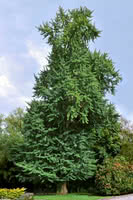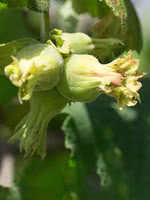Mon-Fri 9am - 5pm Mountain time
Ginkgo Biloba vs Yamhill Hazelnut
Ginkgo biloba
Corylus avellana Yamhill
NOT AVAILABLE THIS SEASON - MIGHT RETURN
NOT AVAILABLE THIS SEASON - MIGHT RETURN
The Ginkgo Biloba is regarded as one of the most distinctive and beautiful of all the deciduous trees, and has remained genetically unchanged for millions of years. Its beautifully fan-shaped leaves develop a clear yellow colour in fall. Graceful and attractive year-round, Ginkgo is the perfect conversation starter in your yard.
The Yamhill Hazelnut is a tasty, relatively cold hardy hazelnut that is a popular European variety.
It is known to be a strong grower and has moderate eastern filbert blight resistance. It is a suitable pollinizer for the York Hazelnut and European Hazelnut.
Introduced by Oregon State University, The Yamhill Hazelnut is used by Ferror Roche for their candy and chocolate spread desserts.
Not all hazelnuts pollinate with each other so it is important to pick the correct pollination pairs. Two compatible varieties of hazelnut are required to produce nuts. Nuts will only be produced once maturity is reached, around 2-3 years.
Ginkgo Biloba Quick Facts
Yamhill Hazelnut Quick Facts
Toxicity: Uncooked nuts in large quantities

